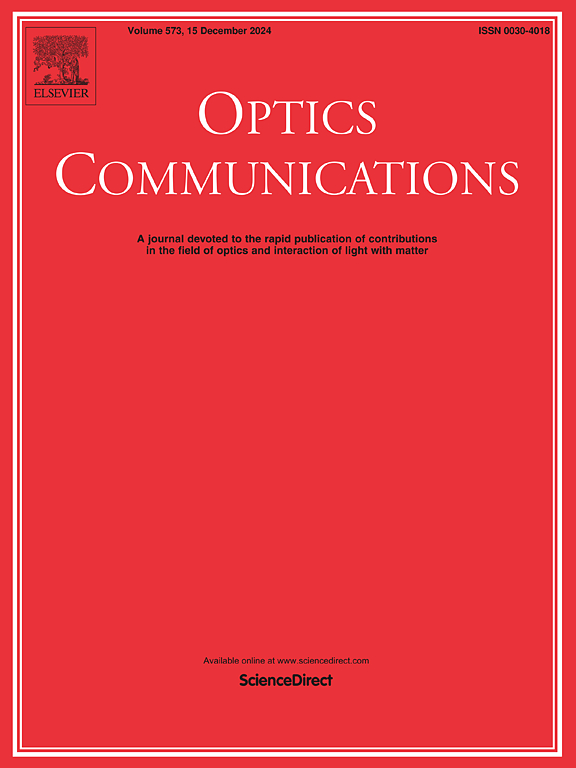Lateral mode selection of a novel laser structure with surface tapered distributed Bragg reflectors
IF 2.2
3区 物理与天体物理
Q2 OPTICS
引用次数: 0
Abstract
This study proposes a theoretical model and optical simulation framework to achieve single lateral mode operation in broad-area mesa lasers by integrating surface narrow distributed Bragg grating (DBR) reflectors. By introducing an effective grating confinement factor (Γg,eff) to refine the coupling coefficient formula for buried heterostructure gratings, we systematically analyze the impact of grating parameters—etching depth (dg), width (Wg), and filling factor (γ)—on the coupling coefficients (κ) and reflectivity of TE00 and TE01 modes. Key relationships between modal discrimination (MD) and grating parameters, as well as cavity length (L), are established. We propose a novel surface tapered DBR structure with varying Wg, which enhances MD notably compared to uniform gratings, while maintaining high TE00 reflectivity. This work provides a design paradigm for high-power, single-lateral-mode lasers, bridging the gap between broad-area mesa scalability and spectral purity requirements in applications such as atomic clocks and precision navigation systems.
具有表面锥形分布布拉格反射器的新型激光器结构的横向模式选择
本研究提出了一种理论模型和光学仿真框架,通过集成表面窄分布布拉格光栅(DBR)反射器来实现广域台面上激光器的单侧模工作。通过引入有效光栅约束因子Γg,eff来完善埋地异质结构光栅耦合系数公式,系统分析了光栅参数蚀刻深度(dg)、宽度(Wg)和填充因子(γ)对TE00和TE01模式耦合系数(κ)和反射率的影响。建立了模态分辨(MD)与光栅参数和腔长(L)之间的关键关系。我们提出了一种具有不同Wg的新型表面锥形DBR结构,与均匀光栅相比,它显著增强了MD,同时保持了高TE00反射率。这项工作为高功率单侧模激光器提供了一种设计范例,弥合了原子钟和精密导航系统等应用中广域台面可扩展性和光谱纯度要求之间的差距。
本文章由计算机程序翻译,如有差异,请以英文原文为准。
求助全文
约1分钟内获得全文
求助全文
来源期刊

Optics Communications
物理-光学
CiteScore
5.10
自引率
8.30%
发文量
681
审稿时长
38 days
期刊介绍:
Optics Communications invites original and timely contributions containing new results in various fields of optics and photonics. The journal considers theoretical and experimental research in areas ranging from the fundamental properties of light to technological applications. Topics covered include classical and quantum optics, optical physics and light-matter interactions, lasers, imaging, guided-wave optics and optical information processing. Manuscripts should offer clear evidence of novelty and significance. Papers concentrating on mathematical and computational issues, with limited connection to optics, are not suitable for publication in the Journal. Similarly, small technical advances, or papers concerned only with engineering applications or issues of materials science fall outside the journal scope.
 求助内容:
求助内容: 应助结果提醒方式:
应助结果提醒方式:


